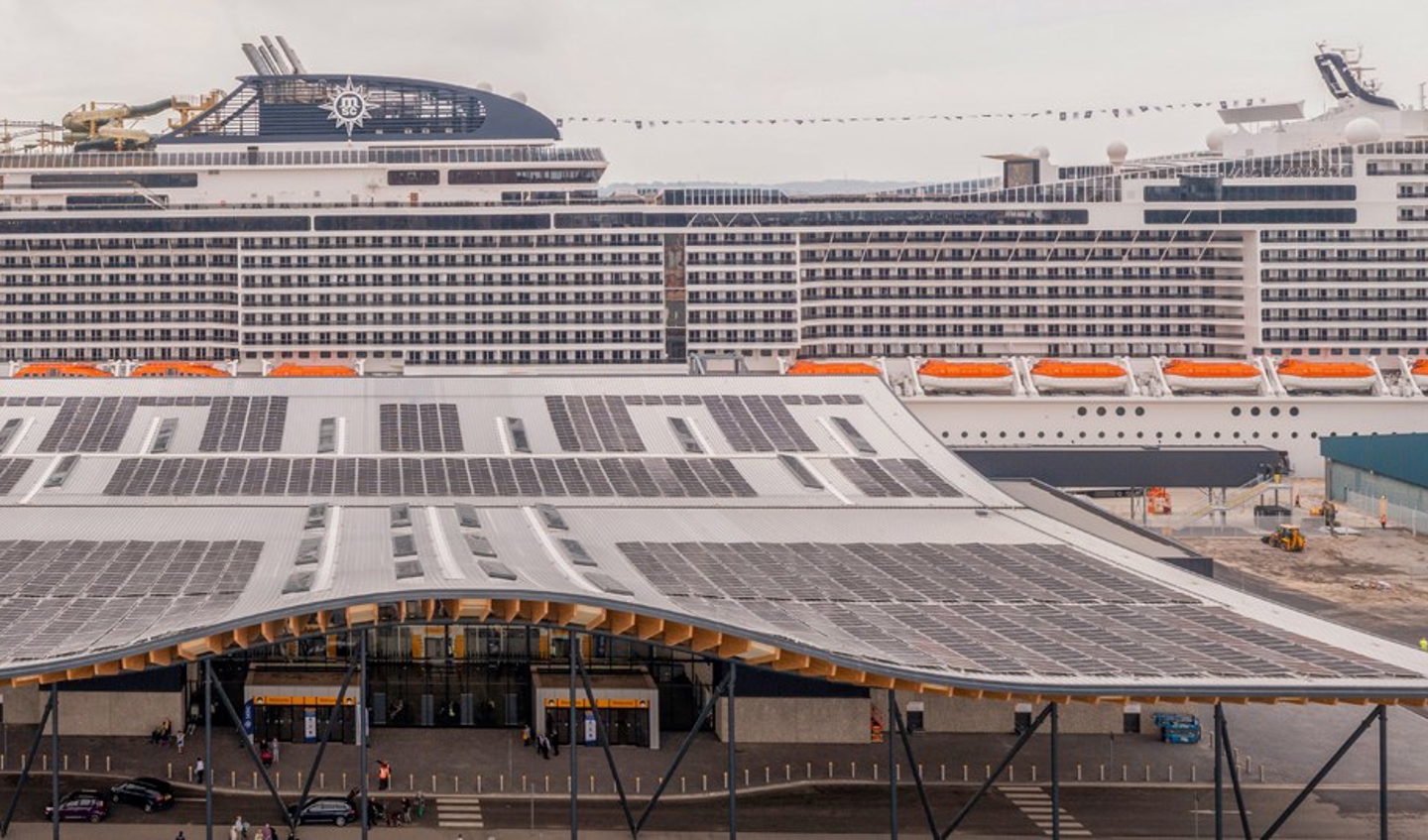Throughout the global pandemic, the focus on sustainability has heightened, and while we have continued to ensure all 21 ABP ports are ‘Keeping Britain Trading’, handling over a quarter of the UK’s seaborne trade, we have also maintained momentum to transform our own operations and support the UK government’s ambition of net zero emissions by 2050.
Our 21 ABP ports gained ISO 4001 certification in Environmental Management in January 2021 and in the last year alone, we have made further progress in decarbonising our own operations. Our new Horizon Cruise Terminal in Southampton has opened, with its rooftop covered in solar panels and its shore power, resulting in zero emissions at berth; improving local air quality as well as enabling the use of green energy. We have completed the UK’s largest rooftop solar array in our Port of Hull. We have invested in electric cranes and electric vehicles throughout our ports and we also recently launched the first of our new, more fuel‑efficient fleet of pilot boats.
In fact, since 2011, ABP has invested over £55 million in our sustainability measures. Our commitment to sustainability goals was further illustrated this year by our recent partnership with BNP Paribas and Aviva Investors to complete the first ESG*‑linked interest rate swap repack transaction. This pioneering move demonstrates how innovation in sustainability‑linked finance can support corporate and institutional clients to work towards a greener future.
ABP continues to work closely with our customers to build sustainable supply chains. In investing in digitalisation and technology, such as the launch of a private 5G network at the Port of Southampton (the first of its kind in any UK mainland port), and a new automotive inventory system, for both Southampton and Grimsby, we can offer increased efficiency for our customers, which in turn creates a measurable reduction in transport distance and carbon emissions.
Investing in infrastructure in our four ports in the Humber enables our customers to make choices that reduce costs and carbon emissions. For example, a comparative study by the University of Hull Logistics Institute demonstrated how moving just 10% of cargo from southern ports to the Humber could save some 100,000 tonnes of CO2e (carbon dioxide equivalent) annually, by importing goods via ports closer to their final destination. However, it is not simply where the cargo comes in, but how.
It has long been recognised that moving more by rail and ship saves carbon emissions. This has been highlighted in our 21 years managing TimberLINK at our Port of Troon, Scotland, where we handle 100,000 tonnes of roundwood timber, reducing carbon emissions by more than 1,200 tonnes every year. More recently, ABP’s Port of Ayr received a cargo of wheat partly destined for the world‑famous Scotch whisky industry, which had arrived from ABP’s Port of Ipswich. This saved 61,535 lorry miles, which approximately equates to a reduction of 82 tonnes in carbon emissions.
ABP is also investing significantly in renewable energy. 17 of our 21 ports now have renewable energy and we’re increasing our ports’ capacity to support the growth of the offshore wind energy industry. Not only have our Ports of Grimsby, Barrow and Lowestoft emerged as leading centres of offshore wind operation and maintenance, we’ve also invested in a £310 million offshore wind facility at Green Port Hull, a joint investment by Siemens and ABP.
Development has already begun on the Lowestoft Eastern Energy Facility (LEEF), which is a major ABP investment project tailored to the offshore energy industry’s latest requirements and creates a highly competitive offer for ABP’s customers. To be completed in two phases – LEEF East and LEEF West – the project will create additional quay space and berthing capacity, new infill land and a deeper harbour approach to accommodate flexible operations, plus around 5,000 square feet of new office space with direct quayside access. The site will also benefit from shoreside power, while retaining fish landing sites.
We also see the huge potential in floating offshore wind turbines; we are looking at the development of Port Talbot, one of our four ports in South Wales, as a floating offshore wind cluster to support the fast‑growing wind energy in the Celtic Sea. Strategically placed turbines can harvest Swansea Bay’s plentiful wind resources, whilst ground mounted and rooftop solar can help meet Port users’ energy needs. Not only will this development ensure we continue to reduce our carbon footprint, but we also can form a competitive advantage for investors in the region.
Working in partnership with our customers, industry leaders and government is pivotal to the rate of progress in achieving our ambitious sustainability goals. In gaining Freeport status for our ports in the Humber, Garston (Liverpool), Southampton and Plymouth, further opportunities are created to implement sustainability measures. ABP’s four ports in the Humber will be able to lead the way in de‑carbonising the UK’s economy through carbon capture and storage and alternative fuels, and our Port of Southampton will support the Solent‑Southampton Freeport, catalysing an innovation revolution in maritime and green growth.
As a leading partner in Zero Carbon Humber, which has brought together international energy companies, heavy industry, leading infrastructure and logistics operators, engineering firms and academic institutions, we share the vision of building the world’s first Net Zero industrial cluster and decarbonising the North of England. This will be achieved through low carbon hydrogen, carbon capture and negative emissions, known as carbon removal technology.
From renewable and low carbon energy production, such as offshore wind, biomass and hydrogen production, to carbon capture, utilisation and storage, ABP’s vast freehold bank and ports are primed and ready to support the drive towards achieving the nation’s target of net zero emissions by 2050.







